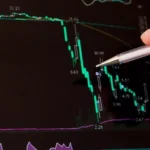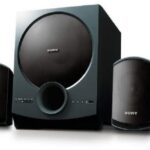
Embarking on the Echelons of Sonic Prowess: NASA’s Vision for Hypersonic Air Travel
In the pursuit of surpassing sonic barriers, NASA has unveiled its audacious ambition to construct a supersonic aerial vessel tailored for discerning passengers, capable of breaching the very threshold of sound itself. The revelation of our present comprehension aligns seamlessly with this objective.
NASA’s Pinnacle Endeavor: Condensing Temporal Distances from London to New York into a Mere Span of 90 Minutes
This week, the space agency has presented a meticulously outlined array of potential passenger markets, encompassing approximately fifty deeply-rooted urban pathways. Among these, a prominently envisioned route facilitates flight trajectories, linking the bustling cityscape of New York with the iconic sprawl of London, promising an expedition fourfold swifter than existing benchmarks.
For this groundbreaking endeavor, industry titans such as Boeing, Rolls-Royce, and GE Aerospace have been enlisted. They shoulder the formidable responsibility of crafting conceptual prototypes without being confined by proprietary constraints.
As per NASA’s astute considerations, a precise assessment was recently conducted to gauge the commercial viability of supersonic passenger aviation. This evaluation encompassed vessels boasting velocities spanning the spectrum from Mach 2 to Mach 4, translating to an astonishing 1,535 to 3,045 mph when measured at sea level.
In stark contrast, the fastest among contemporary airborne giants maintains a relatively sedate pace of 600 mph, representing a mere 80% of the resplendent symphony of sound’s speed. The annals of aviation witnessed a seismic shift with the advent of Concorde, the pioneering commercial aircraft that broke the sonic barrier, achieving a cruising speed denoted by Mach 2.02, an astounding 1,354 mph. This iconic marvel, a collaborative venture between British Airways and Air France, graced the skies from 1976 until its graceful retirement in 2003.
Proximal Aspirations: The Auspicious Realms Extend a Call
Nurtured by NASA’s methodical explorations, the nearby realms of potential passenger markets stand vividly revealed. However, a substantial hurdle looms large: prevailing regulations emanating from the United States and various sovereign entities prohibit supersonic flight over terrestrial expanses. Consequently, the focus of inquiry shifts toward intercontinental journeys, specifically traversing the high-traffic thoroughfares spanning the North Atlantic and the expansive Pacific domain.
Leveraging the prowess of its hushed supersonic marvel, christened as the X-59, NASA’s Quesst mission aspires to provide regulatory authorities with invaluable data, catalyzing a reevaluation of the prohibited supersonic flight guidelines associated with terrestrial corridors. Reflecting on historical records, one encounters precedent in concept evaluations conducted at Mach 1.6 to 1.8 over a decade prior. These very evaluations laid the groundwork for subsequent research pursuits undertaken by NASA, ultimately leading to the emergence of the X-59. Lori Ozoroski, steward of NASA’s Commercial Supersonic Technology Project, asserts, “Analogous conceptual evaluations carried out in bygone eras, cruising at the nexus of Mach 1.6 to 1.8, forged seminal pathways pivotal in directing NASA’s investigative pursuits, which in a cascading sequence, culminated in the inception of the X-59.”
Grandiose Strides: NASA’s Epoch of Advanced Aeronautical Progress
The Advanced Air Vehicles Programme (AAVP), championed by NASA, strides resolutely into the subsequent phase of its elevated odyssey, deeply entrenched in the realm of high-velocity conveyance exploration. This phase is characterized by the awarding of two 12-month contracts to a select consortium of enterprises. Their mandate involves the gestation of concept blueprints and the mapping of technological trajectories.
Navigating these very pathways necessitates a comprehensive scrutiny of aviation’s latent horizons, embracing the inherent dangers and challenges therein, all while deciphering the technological prerequisites necessary for the realization of hypersonic journeys surpassing Mach 2.
Guiding this charge is the vanguard led by Boeing, fortified by the collaborative acumen of Exosonic, GE Aerospace, the sagacious minds at Georgia Tech Aerospace Systems Design Laboratory, the virtuosi from Rolls-Royce North American Technologies, and a constellation of allied collaborators.













